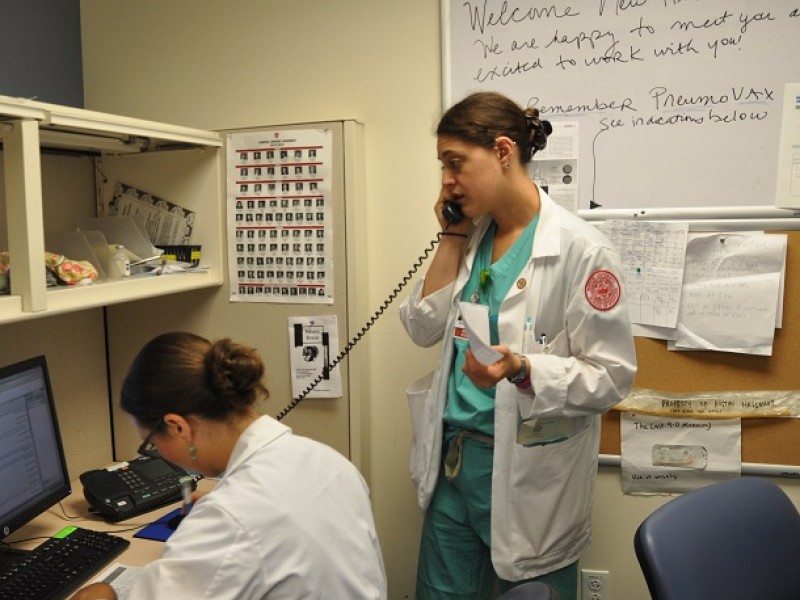By Rich Joseph
Los Angeles Times.
A growing number of medical students today are tacking on a business degree. Since 1993 the number of MD/MBA programs has ballooned from six to about 65, representing nearly half of all U.S. medical schools.
The majority of MD/MBA students will complete a medical residency and use their business training to lead physicians and manage hospitals or other health care systems. Yet here at Stanford, where I am one of 18 such dual-degree candidates, some of my peers are considering joining digital health startups instead.
We are surrounded by an explosion of such opportunities, propelled by more than $2 billion of venture capital funding in the first half of 2015.
Doximity, a professional network for physicians, reported in 2011 that only 68 percent of Stanford medical students go on to pursue clinical residency, a lower share than all but six medical schools in the country.
As I alternate between these two worlds, the hospital and Silicon Valley, to complete my degrees, I see an obvious reason why medical professionals may be lured into business and away from patient care: the contrast between the work environments.
Doctors in training effectively live at the hospital (hence the term “resident”). After the emotional and physical toll of overnight duty, emergency calls or lengthy surgeries, weary residents find little to support their health and performance.
Hospital cafeterias sell greasy foods, sodas and candy scarfed by sleep-deprived residents to allay mounting stress. At the county hospital in San Jose, where I worked last summer, we updated patient records on computers in cramped, dusty, sun-starved rooms. On-site fitness facilities at such hospitals, if they exist, are often inaccessible or insufficient.
Quiet contemplation centers to escape the fluorescent lights, incessant paging and the stale smell of sickness? In our dreams. The rooms where residents nap during overnight shifts look and feel like jail cells. After 14 hours plus on call, I would drive home with the windows down and music blasting to stay awake.
Meanwhile, classmates from business school rode on cushy commuter buses to their internships at tech companies that served free gourmet meals. They had ergonomic work stations and top-of-the-line gyms. Those at the Googleplex enjoyed massages. When deadlines approached, they could take advantage of on-site oil changes, or laundry and dry cleaning. Friends at Facebook commented on the benefits of standing desks, on-site barbers and a bike repair shop. Even those at smaller companies, such as Airbnb and Square, raved about the free organic snacks, yoga classes and Uber rides after late nights at the office.
Now, as I interview for my clinical residency, the most intense phase of medical training, I’m excited yet troubled. I wonder: How are medical trainees expected to restore the health of others without the means to care for ourselves?
Tech companies, with their generous benefits, blur the boundary between one’s personal and professional life in order to recruit and retain a healthy and productive workforce. The medical establishment, by contrast, attempts to inject a “healthy balance” by limiting one’s hours at work. The Accreditation Council for Graduate Medical Education constrains first-year residents to 80 hours a week.
Ignore for the moment whether that’s too much or within reason: My complaint is that an exclusive focus on hours sharpens the divide between work and life and reinforces their incompatibility. Indeed, studies have shown that duty-hour reform has not significantly reduced burnout, substance abuse or suicide. A global study published recently in the Journal of the American Medical Assn. found that 29 percent of residents experience depression during their residencies.
Cynicism infects many residents who feel downtrodden by the grueling schedule, the hours spent glued to electronic health records, the pitiful salary (barely above minimum wage when counting total hours worked) and the colossal burden of medical school debt. “Get out now,” former residents warned me. “Go into industry.” Not only may medicine be losing tremendous talent, it is also losing vitality, the vitality that our patients desire and deserve.
At least some residency programs have begun to integrate wellness programs. At Stanford, for example, the general surgery residents participate in a program called Balance in Life that addresses their professional, physical, psychological and social well-being. Incoming anesthesia residents receive lectures on sleep and participate in weekend wellness retreats. Emergency medicine residents attend group sessions on mental health; counseling and support services are available.
Our technology neighbors can teach us a valuable lesson: To realize the potential of your workforce, integrate work and life by creating an environment that encourages holistic self-care. Ultimately, that should be the hallmark not just of residencies but the entire medical profession.
Doctors don’t need open vacation policy, arcade rooms or bring-your-pet-to-work days. But we do need healthful food to sustain energy, gyms to stay sharp and relieve stress, reimagined workspaces that improve communication and time to decompress, laugh, be human. These benefits will make us more whole. And our patients will thank us.
___
ABOUT THE WRITER
Rich Joseph is a medical and business student at Stanford. He wrote this for the Los Angeles Times.














































































































































































































































































































































































